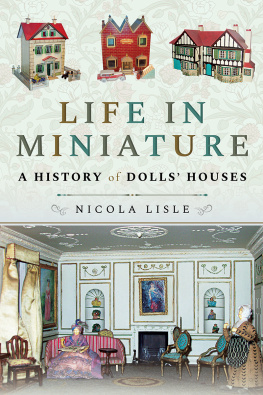First published 2005 by Ashgate Publishing
Published 2016 by Routledge
2 Park Square, Milton Park, Abingdon, Oxon OX14 4RN
711 Third Avenue, New York, NY 10017, USA
Routledge is an imprint of the Taylor & Francis Group, an informa business
Copyright 2005 Clive Edwards
Clive Edwards has asserted his moral right under the Copyright, Designs and Patents Act, 1988, to be identified as Author of this Work.
All rights reserved. No part of this book may be reprinted or reproduced or utilised in any form or by any electronic, mechanical, or other means, now known or hereafter invented, including photocopying and recording, or in any information storage or retrieval system, without permission in writing from the publishers.
Notice:
Product or corporate names may be trademarks or registered trademarks, and are used only for identification and explanation without intent to infringe.
British Library Cataloguing in Publication Data
Edwards, Clive, 1947
Turning houses into homes : a history of the retailing and consumption of domestic furnishings. (The history of retailing and consumption)
1.House furnishings industry and trade History 18th century 2.House furnishings History 18th century 3.Dwellings History 18th century 4.House furnishings industry and trade History 19th century 5.House furnishings History 19th century 6.Dwellings History 19th century 7.House furnishings industry and trade History 20th century 8.House furnishings History 20th century 9.Dwellings History 20th century 10.Consumption (Economics) History
I. Title
381.4'5645'09
Library of Congress Cataloging-in-Publication Data
Edwards, Clive, 1947
Turning houses into homes : a history of the retailing and consumption of domestic furnishings / Clive Edwards.
p. cm. (The history of retailing and consumption)
Includes bibliographical references.
ISBN 0-7546-0906-5 (alk. paper)
1. House furnishings industry and tradeHistory. I. Title. II. Series.
HD9773.A2E38 2004
338.4'7684'009dc22
2003056903
ISBN 9780754609063 (hbk)
ISBN 9781138263666 (pbk)
Typeset by IML Typographers, Birkenhead, Merseyside
Frontispiece 1950s home
(Winifred Burman, Ourselves and Our Homes, Blackie and Son, 1951)
Sadgrove, Brokers Row, Moorfields, warehouse trade card (Bodleian Library, University of Oxford, John Johnson Collection: Trade Card 9 (118))
Hodgkins and Son trade card (Bodleian Library, University of Oxford, John Johnson Collection: Trade Card 4 (66))
Hodsons warehouse, c. 173040 (A. Heal, London Furniture Makers, Batsford, 1953)
Hewetson Brothers, Furnishers, Tottenham Court Road, 1841 (John Tallis, London Street Views, 183941)
Atkinson and Co. showroom, Westminster, 1890 (Reproduced by permission of English Heritage NMR)
Saunders and Wooley shop front design, 1840 (N. Whittock, On the Construction of Shop Fronts)
Heelas of Reading showroom (John Lewis Partnership Archive Collection)
Heal and Sons, Antique Department, 1908 (Reproduced by permission of English Heritage NMR)
Maple and Co. price list, 1850s (Private collection)
Oetzmann and Co. showrooms and price list, c. 1870 (Private collection)
Wilbee and Co., Herne Bay, c. 1870s (Bodleian Library, University of Oxford, John Johnson Collection: Trade Card 4 (72))
Waring and Gillow showroom, Manchester, 1897 (Reproduced by permission of English Heritage NMR)
Old furniture shop, London, 1877 (John Thompson and Adolph Smith, Street Life in London)
Jackson and Graham room setting, 1881 (R.W. Edis, Decoration and Furniture of Town Houses)
Furniture department, John Lewis store, Oxford Street, London, 1950s (John Lewis Partnership Archive Collection)
The Times Furnishing shop, Birmingham, 1930s (Reproduced from Alexandra Artley (ed.), Golden Age of Shop Design, 1975, with permission from Elsevier)
Hatfield New Town show house, 1950s bedroom (Design Council and the Design History Research Centre, University of Brighton)
Hatfield New Town show house, 1950s dining room (Design Council and the Design History Research Centre, University of Brighton)
John Perring, Home Planner Kit, 1960s (Private collection)
Tables
Effect of economic measures on demand for furniture, 19581968
Cockaynes of Sheffield: Staff list relating to house furnishing departments, c. 1913











